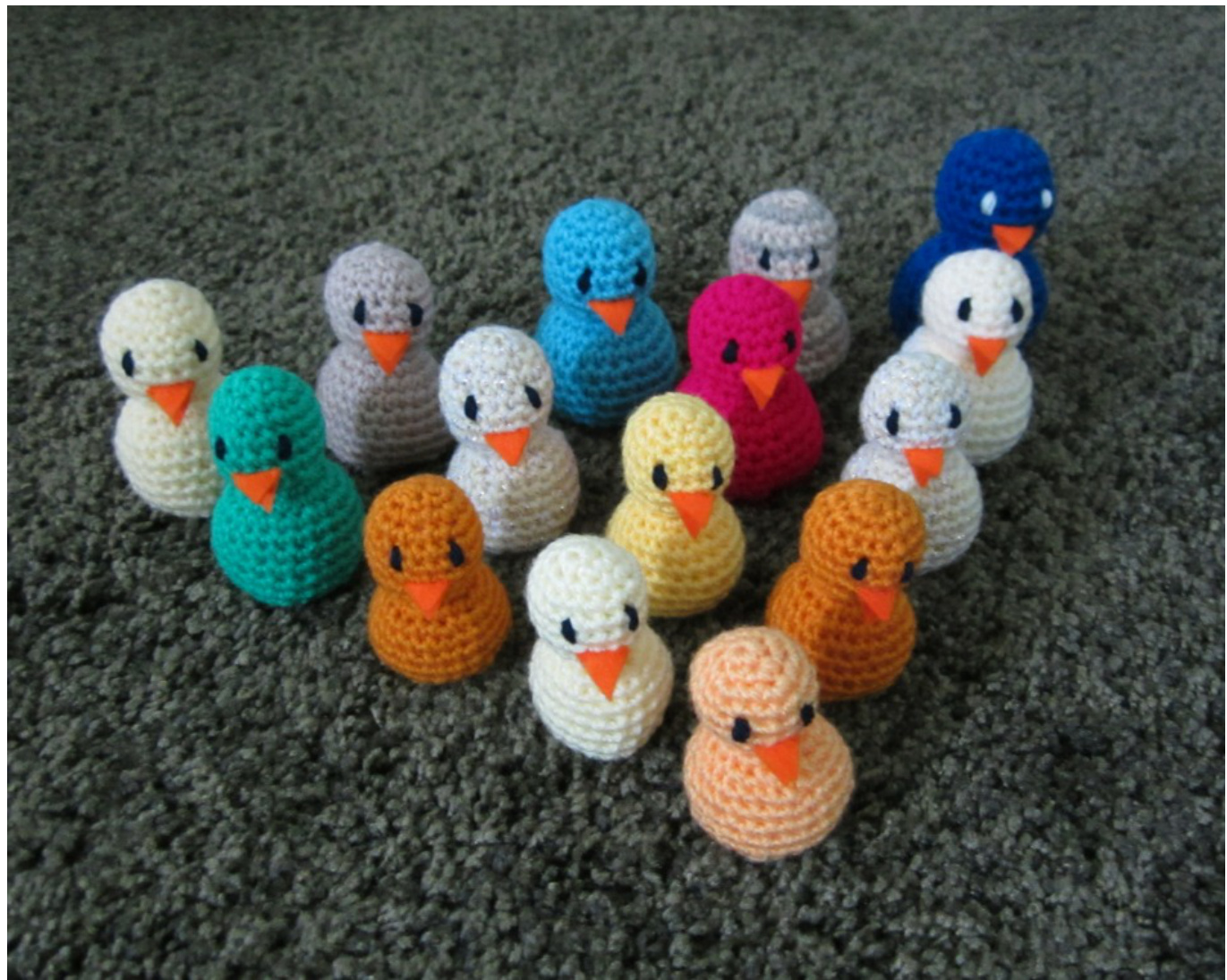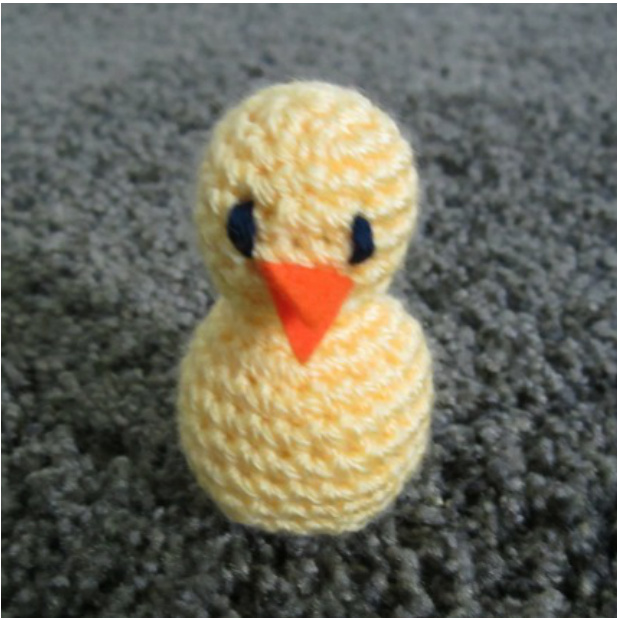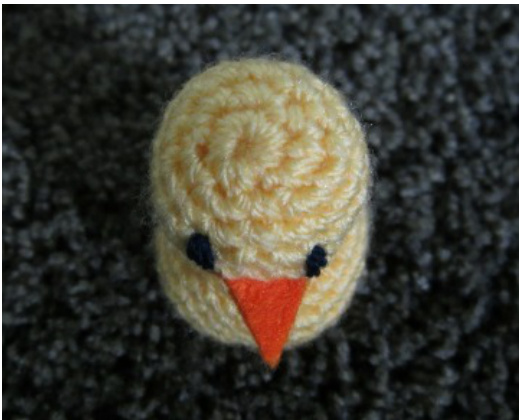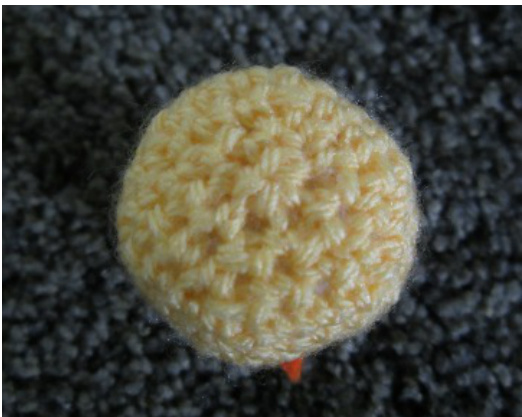oolly Thoughts
CURIOUSCHARACTERCREATIONS

If it looks like a duck .
The easiest crochet duck ever designed by Pat Ashforth & StevePlummer
If it looks like a duck ...
This pattern has been created as part of The Little Yellow Ducks Project
The Little Yellow Ducks Project was started, by Emma Harris, on April 15th 2014 to help raise awareness of the need for blood, stem cell, organ, and tissue donors. The Project's web site (thelittleyellowduckproject.org/) says: The Little Yellow Duck Project involves people around the world handcrafting little yellow duck gifts as random acts of kindness that areleft in public places for others to find. A special tag on each one invites the finder to take their gift home to brighten their day and to visit this website to register where they found their gift. We hope that the stories and information found here will encourage them to pledge their own random act of kindness by registering to donate blood, bone marrow, organs tissues. This project is very important to me as I received a kidney transplant, from an unknown donor, in 1986.

On June 23 (the time of writing this pattern) 404 ducks had been reported as found, in six different countries.

Top of head This is the easiest crochet duck you will ever find. It is made in one piece, using only one stitch so is suitable for absolute beginners. The beak is made from felt so that you don't need to worry about making a small piece to join on. More experienced crocheters will find that it works up very quickly and it is almost impossible to go wrong. If you do make a mistake it probably won't be noticeable. It can be made in any yarn and the finished size will depend on the thickness of the yarn.

Underneath This pattern can be used to make ducks for this, or any other charity, but it cannot be sold, reproduced, translated or altered without the permission of the copyright holders. OPat Ashforth & Steve Plummer 2014 Woolly Thoughts 166 Keighley Road, Colne, Lancashire, BB8 OPJ, England woollythoughts.com
If it looks like a duck ... Method
Yarn: Small ball of any yarn. Any thickness can be used. Smooth(ish) yarns are easiest to work with. Tools: Use a hook slightly smaller than suggested on your yarn band, so that the stitches are tight and the stuffing can't escape. Sewing-up needle. Other: Stuffing. Small piece of felt or other non-fray fabric, for beak. Contrast yarn for eyes. Stitch: Only one stitch is used. In UK this is called dc (double crochet). In US it is called sc (single crochet). In these instructions it is called 'stitch'. To make a stitch, pull the yarn through so that there are two loops on the hook. Pullthe yarn through again and pull it right through both loops on the hook. This video shows how to make the stitch (Ignore the part about turning and working back.) slip-knot but do not tighten it. Pull the yarn through the loop on the hook to keep it in plac Round 1: Work 6 stitches into the slip-knot. Tighten the knot. 6stitches You have now done the most difficult bit. You can darn in the end, or work over it if you want to but it probably won't benecessary. Work in a spiral. Do not attempt to join the rounds. Round 2: Two stitches into each stitch. 12 stitches Round 3: (One in the next stitch, two in the next) 6 times. 18 stitches Round 4: One into each stitch. 18 stitches Round 5: One into each stitch. 18 stitches Round 6: One into each stitch. 18 stitches Round 7: One into each stitch. 18 stitches Round 8: (Miss next stitch, one in next stitch) 9 times. 9 stitches Round 9: One into each stitch. 9 stitches Round 10: Two into each stitch. 18 stitches Round 11: (One into each of next two stitches, two in next stitch) 6 times. 24 stitches Round 12: One into each stitch.. 24 stitches Round 13: One into each stitch. 24 stitches Round 14: One into each stitch. 24 stitches Round 15: One into each stitch. 24 stitches Round 16: (Miss next stitch, one in each of next three stitches) 6 times. 18 stitches Round 17: (Miss next stitch, one in each of next two stitches) 6 times. 12 stitches Stuff, making sure that the first stuffing goes right into the head. Round 18: (Miss next stitch, one in next stitch) 6 times. 6 stitches Cut yarn and use the end to thread through the last six stitches and close the hole. Beak: Cut a small diamond of felt. Fold it in half and stitch in place Eyes: Use a length of yarn and sewing-up needle. Put the needle into the fat part of the head (or the neck) and bring it out where you want the bottom of the eye to be. Pull it so the end of the yarn disappears. Make two or three stitches on top of each other to make the eye. Bring the yarn up where you want the bottom of the second eye to be. Complete to match the first eye. Take the yarn out through the fat part of the head (or neck) and trim so that it can't be seen. Don't worry if you don't get the stitch count exactly right. Small mistakes probably won't show. If it looks like a duck ..









